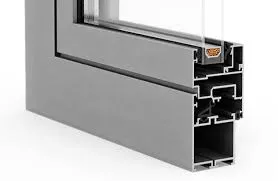Properties and Applications of Wrought Iron in Metalworking and Construction
The Significance of Wrought Iron in Metalworking
Wrought iron, known for its malleability and ductility, has played a significant role in the history of metalworking. It is an iron alloy that is characterized by its fibrous structure and is produced by the oxidation and reduction of iron ore in a forge at high temperatures. The primary difference between wrought iron and cast iron is that wrought iron is worked by hammering, which imparts its distinctive properties, making it suitable for various applications, particularly in architectural and artistic endeavors.
Historical Context
Wrought iron has been used for thousands of years, dating back to ancient civilizations. Its use can be traced to around 1200 BC, and it became the dominant form of iron used in various cultures, including the Romans and later in Medieval Europe. Wrought iron was the material of choice for making weapons, tools, and structural components because of its superior strength and ability to be shaped into complex forms.
During the Industrial Revolution, wrought iron was widely used for constructing buildings, bridges, and railways. Notable structures, such as the Eiffel Tower in Paris, showcase the capabilities of this material, embodying both strength and aesthetic appeal. The introduction of new production techniques, including puddling and forging, allowed for mass production, which significantly influenced architecture and engineering practices of the time.
Properties of Wrought Iron
What sets wrought iron apart from other iron types is its mechanical properties. Due to the low carbon content (typically less than 0.08%), it is much more malleable than cast iron. This composition provides wrought iron with excellent tensile strength, making it suitable for applications requiring high resilience. Additionally, its fibrous grain structure gives it sound impact resistance, allowing it to absorb energy rather than shatter upon impact.
Another notable feature of wrought iron is its corrosion resistance. The presence of slag inclusions, remnants from the smelting process, acts as a protective layer against moisture. This property has contributed to the durability of wrought iron structures, many of which have stood the test of time and are still in use today.
metal wrought iron

Modern Uses
While wrought iron saw a decline in use with the advent of steel, which offered even greater strength and versatility, it has not disappeared from the metalworking landscape. In contemporary times, wrought iron is often associated with decorative and artistic applications. Craftsmanship has led to the resurgence of wrought iron in interior and exterior design, where artisans create gates, railings, furniture, and ornamental pieces.
Moreover, wrought iron is still valued in specific industrial applications. Its resistance to fatigue and good workability make it suitable for various mechanical parts, particularly where high strength and ductility are required. It is also used in the manufacturing of heavy-duty equipment, such as hammers and anvils, due to its ability to withstand extensive use.
Wrought Iron in Craftsmanship
The appeal of wrought iron extends into the realm of craftsmanship. Blacksmithing, a traditional craft, thrives on wrought iron techniques. Artisans skilled in this craft breathe life into the material, shaping it into intricate designs that reflect cultural heritage and personal artistry. The tactile nature of wrought iron allows for unique finishes and textures, engaging not only the visual senses but also the tactile experience.
The ongoing appreciation for wrought iron is evident in its use in restoration projects. Historical buildings and monuments often require wrought iron components to maintain authenticity. The combination of restorative techniques and modern technology allows for the careful replication or repair of these elements, preserving cultural history for future generations.
Conclusion
Wrought iron remains a vital part of the metalworking world, reflecting both historical significance and modern utility. Its unique properties, combined with a rich legacy of craftsmanship, ensure that wrought iron continues to be a valuable resource in various applications, from functional architecture to artistic expression. As we move forward, the preservation and appreciation of wrought iron will ensure that its legacy endures in both industry and art.
-
Wrought Iron Components: Timeless Elegance and Structural StrengthNewsJul.28,2025
-
Window Hardware Essentials: Rollers, Handles, and Locking SolutionsNewsJul.28,2025
-
Small Agricultural Processing Machines: Corn Threshers, Cassava Chippers, Grain Peelers & Chaff CuttersNewsJul.28,2025
-
Sliding Rollers: Smooth, Silent, and Built to LastNewsJul.28,2025
-
Cast Iron Stoves: Timeless Heating with Modern EfficiencyNewsJul.28,2025
-
Cast Iron Pipe and Fitting: Durable, Fire-Resistant Solutions for Plumbing and DrainageNewsJul.28,2025
-
 Wrought Iron Components: Timeless Elegance and Structural StrengthJul-28-2025Wrought Iron Components: Timeless Elegance and Structural Strength
Wrought Iron Components: Timeless Elegance and Structural StrengthJul-28-2025Wrought Iron Components: Timeless Elegance and Structural Strength -
 Window Hardware Essentials: Rollers, Handles, and Locking SolutionsJul-28-2025Window Hardware Essentials: Rollers, Handles, and Locking Solutions
Window Hardware Essentials: Rollers, Handles, and Locking SolutionsJul-28-2025Window Hardware Essentials: Rollers, Handles, and Locking Solutions -
 Small Agricultural Processing Machines: Corn Threshers, Cassava Chippers, Grain Peelers & Chaff CuttersJul-28-2025Small Agricultural Processing Machines: Corn Threshers, Cassava Chippers, Grain Peelers & Chaff Cutters
Small Agricultural Processing Machines: Corn Threshers, Cassava Chippers, Grain Peelers & Chaff CuttersJul-28-2025Small Agricultural Processing Machines: Corn Threshers, Cassava Chippers, Grain Peelers & Chaff Cutters












